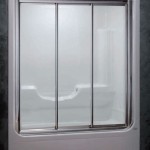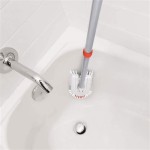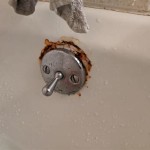Silicone Bathtub Sealant: Your Guide to a Leak-Free Bathroom When it comes to preventing leaks and maintaining a clean and sanitary bathroom, silicone bathtub sealant is an indispensable tool. This versatile sealant forms a waterproof barrier between your bathtub and the surrounding walls, preventing water from seeping through and causing damage to your bathroom's structure. In this comprehensive guide, we will delve into the world of silicone bathtub sealants, exploring their types, benefits, and application techniques. Whether you're a seasoned DIYer or a novice homeowner, this guide will equip you with the knowledge and skills to tackle your bathtub sealing project with confidence. Types of Silicone Bathtub Sealants 1. Acetoxy Cure Silicone: This common type of silicone sealant releases acetic acid during the curing process, which produces a pungent odor. However, once fully cured, acetoxy cure silicone forms a durable and waterproof seal. 2. Neutral Cure Silicone: Neutral cure silicone sealant doesn't release any strong odor during curing, making it a popular choice for indoor applications. It offers excellent adhesion to various surfaces and is less corrosive than acetoxy cure silicone. Benefits of Using Silicone Bathtub Sealant 1. Waterproof Barrier: Silicone sealant creates a watertight seal that prevents water from leaking through the gaps between your bathtub and the surrounding walls. This helps to protect your bathroom from water damage, such as mold and mildew growth. 2. Durable and Flexible: Silicone sealant is highly durable and can withstand exposure to moisture, heat, and cleaning chemicals. It also remains flexible, allowing it to expand and contract with changes in temperature without cracking. 3. Resistant to Mold and Mildew: Silicone sealant is naturally resistant to mold and mildew growth, which can cause unsightly stains and unpleasant odors in your bathroom. 4. Easy to Apply and Remove: Silicone sealant is relatively easy to apply and remove, making it a DIY-friendly option. It can be smoothed out with a wet finger or a sealant removal tool, and any excess sealant can be easily wiped away with a damp cloth. Application Techniques for Silicone Bathtub Sealant 1. Surface Preparation: Before applying silicone sealant, ensure that the surfaces around your bathtub are clean, dry, and free from any dirt, grease, or old sealant. Use a cleaning solution to remove any residue, and allow the surfaces to dry thoroughly. 2. Mask the Areas: To achieve a neat and professional finish, use painter's tape to mask off the areas around your bathtub where you don't want sealant to be applied. This will help to create clean lines and prevent unwanted sealant smears. 3. Apply the Sealant: Cut the tip of the silicone sealant tube at a 45-degree angle, ensuring that the opening is slightly larger than the gap you need to seal. Apply the sealant in a steady and even motion, filling the gap completely. 4. Smooth the Sealant: Use a wet finger or a sealant removal tool to smooth out the sealant and create a uniform, seamless finish. Work quickly, as silicone sealant begins to cure within a short period. 5. Remove Excess Sealant: Before the sealant fully cures, use a damp cloth to wipe away any excess sealant that may have gotten onto the surrounding surfaces. This will help to achieve a clean and tidy finish. 6. Allow the Sealant to Cure: Allow the silicone sealant to cure completely according to the manufacturer's instructions. This typically takes 24 to 48 hours. During this time, avoid using the bathtub or exposing the sealant to water to ensure a proper bond. Conclusion Silicone bathtub sealant is an essential tool for maintaining a leak-free and sanitary bathroom. By understanding the different types, benefits, and application techniques of silicone sealants, you can tackle your bathtub sealing project with confidence and achieve professional-looking results. Remember to always read and follow the manufacturer's instructions for specific application guidelines and curing times. With a little care and attention, you can easily seal your bathtub and prevent water damage, ensuring a long-lasting and beautiful bathroom.

Ge 299 Ml Bathtub Sealant White Réno Dépôt

How To Seal A Bath Properly

Ge Silicone Ii 82 8 Ml Bathtub Sealant White Se 2122 Réno Dépôt

Ge 10 1 Oz White Silicone Bath Tub And Tile Caulk Pack 2749484 The Home Depot

Which Caulks Are The Best For Showers And Tubs

How To Caulk A Bathtub Like Pro

Bath Silicone Sealant Diy Bostik

Dap Amp Advanced Modified Polymer 9 Oz White Kitchen And Bath Sealant 12 Pack 7079800762 The Home Depot
Top Tip On How To Apply Silicone Sealant With Step By Pictures

Ge Silicone Ii Multi Purpose Kitchen Bath Sealant Waterproof Caulk Almond 299 Ml Canadian Tire








